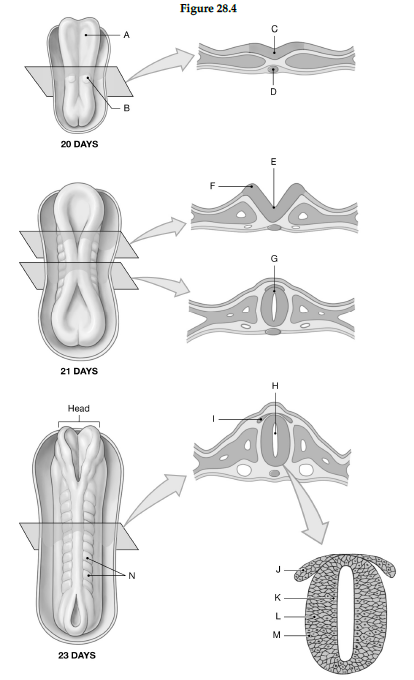In contrast to the right lung, the left lung:
A) has two lobes.
B) has three lobes.
C) is encased in the parietal pleura.
D) can only hold a small volume of air.
Ans: A) has two lobes.
You might also like to view...
Using the figure below, identify the labeled part.

1) Label A: ______________________________
2) Label B: ______________________________
3) Label C: ______________________________
4) Label D: ______________________________
5) Label E: ______________________________
6) Label F: ______________________________
7) Label G: ______________________________
8) Label H: ______________________________
9) Label I: ______________________________
10) Label J: ______________________________
11) Label K: ______________________________
12) Label L: ______________________________
13) Label M: ______________________________
14) Label N: ______________________________
The resting membrane potential is
a. much closer to the equilibrium potential for Na+ than to the equilibrium potential for K+. b. much closer to the equilibrium potential for K+ than to the equilibrium potential for Na+. c. is always -90mV d. both (a) and (c) above. e. both (b) and (c) above.
Which of the following is a source of endocrine disrupting chemicals?
a. insecticides b. food preservatives c. plastic softeners d. pesticides e. all of these
Which of these events occurs when a person steps on a tack with the right foot?
A) The right foot is pulled away from the tack because of the Golgi tendon reflex. B) The left leg is extended to support the body because of the stretch reflex. C) The flexor muscles of the right thigh contract, and the extensor muscles of the right thigh relax because of reciprocal innervation. D) Extensor muscles contract in both thighs because of the crossed extensor reflex.